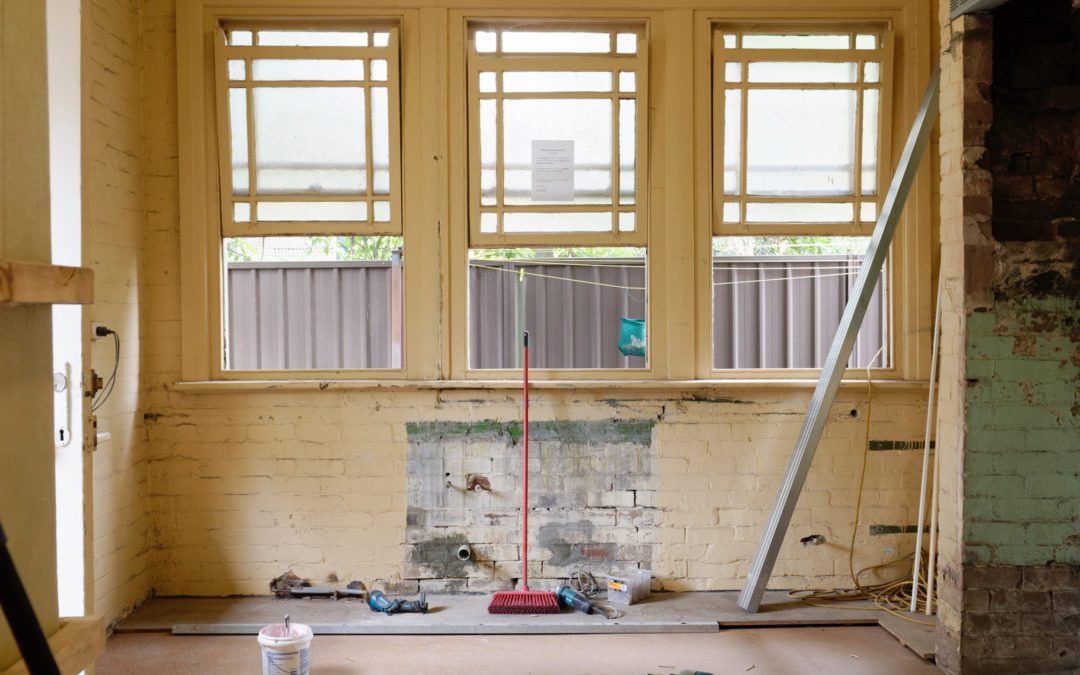This article is a guest post by Bret Engle from DiyGuys.net
It’s got great bones, and it’s in a nice neighborhood. All it needs is a little TLC to make it a wonderful family home. The price is right. You’ve found yourself wondering if you could handle the repairs yourself. Just what does it take to rehab a house? And, are you up to the challenge?
Do Your Homework
You need to be realistic about what you’re taking on. Don’t fall in love with the property, but please do some research. Look at other fixer uppers in your area to compare prices and prospective sale values. Evaluate what work it needs and get estimates from reliable professionals. Even if you’re going to do some of the work yourself, it’s good to know the maximum cost.
Don’t underestimate the work and leave a budgetary cushion for unforeseen events, because they always happen. Once you start opening up walls and floors, it’s not uncommon to find more stuff that needs fixing. Add up the costs and the cushion, including labor, even if it’s your own. Then subtract them from the likely market value after the work is completed. This should be the figure on which you base your purchase price. If your property doesn’t need a great deal of overhaul, sit down and prioritize projects by price and amount of time they’ll consume. If the work is largely cosmetic, figure out which design schemes are likely to cost the least in time and money with the maximum amount of return for your investment.
Find The Financing
Carrying costs and missed deadlines eat up your profit, so make sure your deadlines have enough room built into them from the get go. You’ll have more success lining up lenders for an owner occupied property, but there are also loans specifically targeted to renovation for resale. Look for local lenders interested in investing in the community, and see if you qualify for special financing based on the home’s location, condition or age.
Find Your Pros
Odds are, you’re going to need professional help for at least part of the work. Choose wisely, and research your contractor. You’ll want to ensure the contractor is licensed and insured with great local references. Go and inspect some of his previous work, and check him out with the Better Business Bureau.
Once he’s hired, be in constant communication with him, don’t leave him to his own devices. Even a good contractor can go awry when he’s not kept on task. Get everything you both agree to in writing, and check his progress regularly. Don’t pay the total cost up front; he only needs enough to get the job started, and holding his profit back until he’s finished helps guarantee he’ll deliver on the work. Consider bonuses for beating deadlines and penalties for missing them.
Get Your Hands Dirty
For the bits of the job that you plan to handle yourself, ensure you have the right tools and equipment. Figure out if you need to purchase or rent them and build that into your budget. Some big box stores now have programs to lend out saws, sanders and drills to their customers. Or, some communities have established tool lending libraries to help out with the need; see what is available for your area.
What To Watch Out For
Don’t buy the nicest house in the cheapest neighborhood, but instead try to buy the cheapest house in the nicest neighborhood, because location equals property value. The average listing price for a home in Los Angeles is $799,000. You need to know your market to determine whether or not the house is worth what you’re paying. Avoid buying a house that needs the most expensive jobs done. Paint, flooring, and drywall are cheap, replacing HVAC and moving walls and windows is not. Get a full inspection of the home before you make purchase, so you can be aware of potential problems. Consider doing a title search to ensure nothing impinges on your ownership.
Should You Stay Or Sell?
Once you’ve completed your remodel and renovations, you may find yourself questioning whether to put the place on the market or occupy it yourself. If you’ve listed and the house is not moving, you may be tempted to try to cut your losses by keeping it. But in general, if your house is not moving, you’ve probably overpriced it for your market. Consider the local economy and determine if your area is in a bubble, or a housing decline.
With the right planning, research and preparation, a fixer upper can be a great way to get into the property market, or get into a great neighborhood on a budget. Just use your head and don’t let your emotions make your decisions for you. Be practical and money-minded in making your choices, and you’ll be rewarded with a successful purchase and remodel.
Bret Engle | DiyGuys.net


